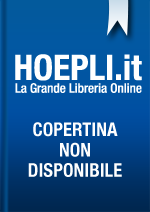
Questo prodotto usufruisce delle SPEDIZIONI GRATIS
selezionando l'opzione Corriere Veloce in fase di ordine.
Pagabile anche con Carta della cultura giovani e del merito, 18App Bonus Cultura e Carta del Docente
Debulking in Cardiovascular Interventions and Revascularization Strategies: Between a Rock and the Heart aims to provide a comprehensive overview on the diagnostic and therapeutic aspects of resistant lesions as well as tailored debulking processes in revascularization strategies. Cardiovascular interventionalists and surgeons alike frequently encounter technical challenges and increased risk when attempting to diagnose and treat resistant cardiovascular lesions, bio-tissues and vessels. Calcified plaques, fibrotic or thrombotic lesions, total occlusions, degenerative plaques, complex lesions and vessels impose morphologic obstacles to the safe and effective delivery and deployment of balloons and stents. In such instances, a debulking strategy involving the actual drilling and extraction of the targeted plaque/bio-tissue constitutes a unique option that ensures safe and efficacious subsequent balloon dilatations and stenting.
A range of topics is included in the book, from the characteristics and constituents of various resistant targets and bio-tissues, to the corresponding options of debulking methods, and finally the technologic and pharmacologic means available for application.
The book also provides an up-to-date description of related management solutions and tools, exploring the medical issues pertaining to the patients with these targets; procedural results and clinical outcomes as related to debulking strategies and associated diagnostic and therapeutic technology and revascularization options.
1. The resistant atherosclerotic plaque: pathologic features and their impact on revascularization 2. Treatment of complex lesions: the importance of vessel preparation strategies 3. Complications of PCI in calcified lesions: causes, recognition, management and how to avoid 4. Structural heart interventions in calcified, fibrotic and thrombotic mitral, tricuspid and pulmonary valves 5. Chronic total occlusions: the impact of calcific deposits on the performance and outcome of percutaneous coronary interventions 6. Usefulness and limitations of the current ACC/AHA and ESC guidelines for debulking of calcified and fibrotic lesions in the coronary and peripheral circulation 7. Contemporary perspectives on the role of vascular and endovascular surgery in the treatment of severe obstructive peripheral arterial/disease 8. The impact of biologic factors, anatomy and mechanical forces on calcification and fibrosis of cardiac and vascular structures 9. Debulking challenging large volume intracardiac and intravascular thrombus with the Angio-Vac percutaneous device 10. Atherectomy debulking of calcified left main coronary lesions-strategies and technologies 11. The "nitinol-constrained" balloon angioplasty [Chocolate] and its clinical applications for patients with severe peripheral atherosclerotic arterial disease 12. Abrasion, grinding, pulverization, vaporization and extraction: debulking options for PCI of calcified coronary lesions 13. Coronary allograft disease in heart transplant recipients: pathology, physiology, diagnosis, management and revascularization options 14. Percutaneous management of challenging resistive targets in interventional pediatric cardiology 15. PCI of hard-rock thrombotic lesions and occlusions 16. PCI of calcified coronary lesions: imaging, tools and outcomes 17. PCI of resistant CTO lesions: the utilization of debulking strategy -a Japanese perspective 18. Perspectives on the role of chelation therapy in the treatment of atherosclerosis: principles of application, clinical results and practical implications 19. Percutaneous cardiac valve replacement of heavily calcified valves 20. Challenges in revascularization of the venous circulation: DVT and venous disorders and the role of deep venous stenting 21. Cardiac MRI: the role of an essential imaging modality in cardiac assessment for surgical debulking 22. Cardiac surgery for constrictive pericarditis 23. Coronary Artery Calcification and Coronary Artery Bypass Grafting 24. The utilization of novel laser based catheter for peripheral arterial atherectomy 25. The history, foundations and development of the debulking strategy in interventional cardiology 26. The application and interpretation of fractional flow reserve in heavily calcified coronary arteries 27. Recanalization and debulking in CTO revascularization 28. Debulking strategy in coronary and endovascular interventions-targets and tools 29. Laser debulking of complex and resistant atherosclerotic plaques in acute coronary syndromes 30. Thrombus debulking in revascularization of atherosclerotic chronic total occlusions 31. Debulking strategies in revascularization of diseased saphenous vein bypass grafts 32. Transcatheter aortic valve failure: the impact of calcifications 33. Coronary Plaque Modification and Preparation with Intravascular Lithotripsy 34. Utilization of debulking strategies in endovascular interventions in peripheral arterial disease 35. Debulking "rock hard" coronary lesions- real life experience from a large tertiary medical center 36. Perspectives on the rationale and utilization of embolic protection systems in aortic interventions 37. Complex aortic plaque: clinical manifestations, diagnosis and management strategies 38. Strategies for electronic device lead extraction: the impact of calcified and fibrotic tissues 39. Thrombectomy with the Flow Triever device for treatment of massive and high risk sub-massive acute pulmonary embolism 40. Calcium and PCI 41. The Implications of Chronic Kidney Disease on Coronary Artery Revascularization











Il sito utilizza cookie ed altri strumenti di tracciamento che raccolgono informazioni dal dispositivo dell’utente. Oltre ai cookie tecnici ed analitici aggregati, strettamente necessari per il funzionamento di questo sito web, previo consenso dell’utente possono essere installati cookie di profilazione e marketing e cookie dei social media. Cliccando su “Accetto tutti i cookie” saranno attivate tutte le categorie di cookie. Per accettare solo deterninate categorie di cookie, cliccare invece su “Impostazioni cookie”. Chiudendo il banner o continuando a navigare saranno installati solo cookie tecnici. Per maggiori dettagli, consultare la Cookie Policy.